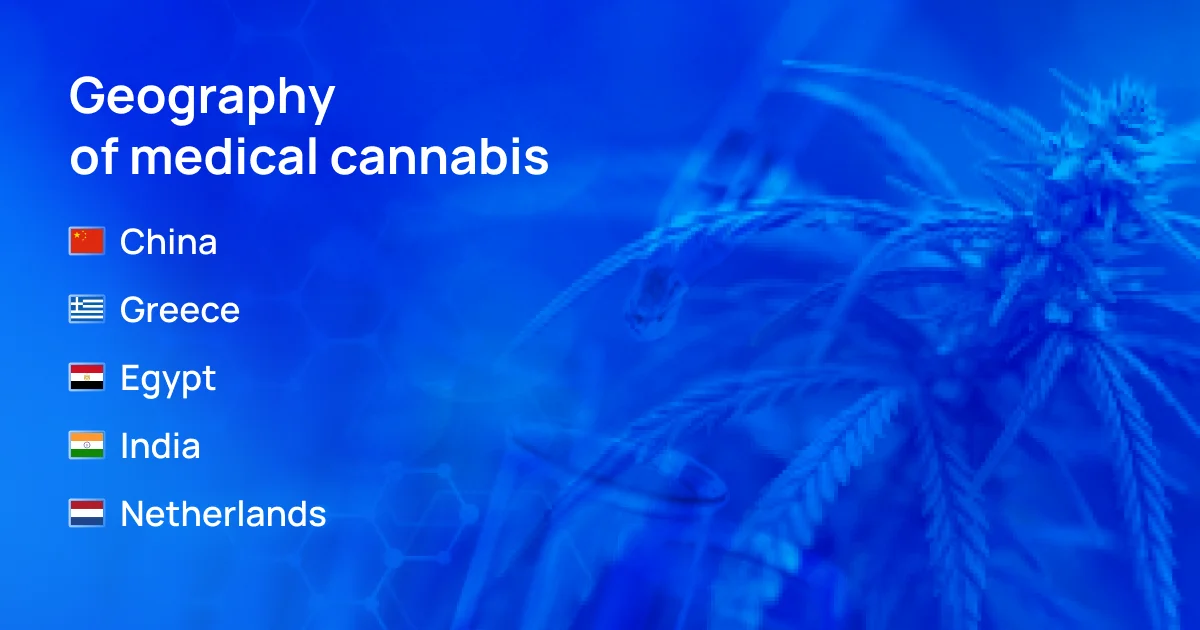Medical cannabis: history and geography

Humanity has been familiar with medical cannabis for over 6,000 years. Healers and doctors in different parts of the world knew about its medicinal properties.
Cannabis was ground into powder and mixed with other drugs, released in capsules like tablets, and also used for smoking. The benefits and dangers of marijuana have been controversial for decades. But, in this article we will introduce you to the practices of different states, tell you about the history of cannabis and its modern use.
Medical cannabis is now clearly defined as buds, hemp concentrates, or synthetic cannabinoids used for medicinal purposes. The main difference between medical marijuana and conventional marijuana is the amount of tetrahydrocannabinol (THC), the main psychoactive component. In marijuana, its content is 5% -35%, in medical - up to 1%
Geography of medical cannabis
The first to use cannabis as an anesthetic is the Chinese surgeon Hua Tuo. He ground the plant into powder and mixed it with rice wine before surgery, thus relieving the patient's pain.
Today, hemp is among the top 50 herbs used in traditional Chinese medicine. With the help of cannabis, they treat rashes, wounds and ulcers, stimulate the nervous system, and are prescribed for fluxes, postpartum complications and poisoning. Also used as a worm and diuretic.
In ancient Egypt, medical marijuana was mentioned in several papyri. The texts indicate that with the help of hemp, the Egyptians relieved the pain of hemorrhoids and treated inflammation of the eyes.

The surviving evidence confirms that cannabis has been used in India for insomnia, headache and a variety of gastrointestinal disorders.
The Greeks used hemp to treat wounds and ulcers in horses. The plant was also used for nosebleeds.
The use of cannabis in medicine is also found in the history of the ancient Islamic world and the Netherlands. In addition to its medicinal properties, hemp is used as animal feed, oil is made from it, clothes are woven, and cellulose is produced.
The modern history of medical cannabis
With the advent of aspirin, the medicinal properties of marijuana temporarily lost their relevance. In the 18th and 20th centuries, many doctors did not stop experimenting with medical cannabis. But bureaucratic and government components led to the fact that in the 20th century, marijuana was officially banned.
The starting point for her rehabilitation was a report from the US National Academy of Medicine, which stated that there was insufficient evidence of the harm of cannabis to human health. In 2020, the UN removed marijuana and its derivatives from the list of the most dangerous drugs. The decision was made based on the WHO recommendations from 2019.
Legalization of medical cannabis
Year 2005

Year 2020

This opens up opportunities for further research on cannabis and its widespread medical uses. Many economists and sociologists believe that decriminalizing cannabis can reduce overall crime and increase tax revenue.
Patient demand for medical cannabis exceeds supply by more than 3 times, but over the past year this shortage has decreased by 15% and continues to decline rapidly.
The history of cannabis is undulating, now we are witnessing its leaps, we are witnessing a new round in the development of marijuana as a medicine. We do not promote the use of drugs or any other prohibited substances. The article describes the history of cannabis and its chronology.
Share
Interesting
Would you like to receive a digest of articles?
One email with the best articles of the week.
Sign up so you don't miss anything.